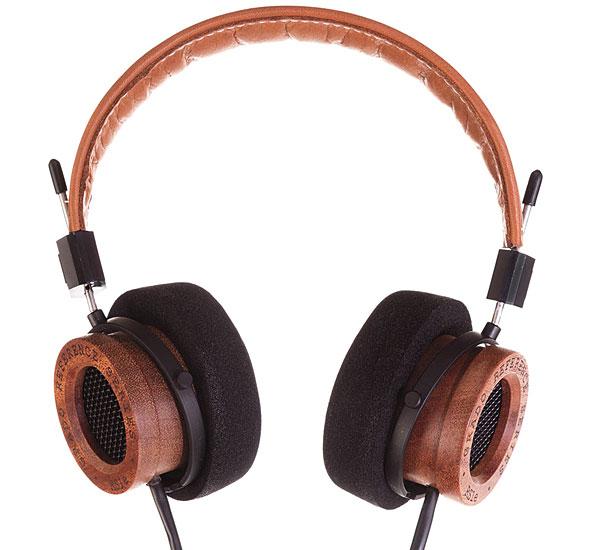Grado RS1e Headphone Review

AT A GLANCE
Plus
Hand-crafted in Brooklyn!
Lightweight design
Incredibly open soundstage
Minus
Cable isn’t user-replaceable
THE VERDICT
The Grado RS1e is lightweight and has a big-as-all-outdoors soundstage and clarity that are unbeatable in its price class.
Grado Labs is located in a nondescript four-story building in the Sunset Park neighborhood in Brooklyn, where Joe Grado started manufacturing phono cartridges in the early 1950s. John Grado (Joe’s nephew) took over day-to-day operations in 1978, and in 1989 Grado Labs jumped into the headphone market. John and Joe hand-built all of the company’s first-generation headphones—the HP-1, HP-2, and HP-3—and those ’phones now fetch anywhere from $1,000 to $2,500 on eBay! Grado Labs is still a family-owned business, and John’s son Jonathan came aboard in 2014.
 The Grado Reference Series RS1e sports African mahogany earpieces, the headband is covered and padded with genuine leather, and there are newly designed 50mm drivers (the left- and right-channel drivers are matched within 0.5 decibels). There’s no automation or glistening robots cranking out these headphones; it’s all still done on a very human scale. Most of the workers were trained by John Grado, whose hands have crafted thousands of headphones.
The Grado Reference Series RS1e sports African mahogany earpieces, the headband is covered and padded with genuine leather, and there are newly designed 50mm drivers (the left- and right-channel drivers are matched within 0.5 decibels). There’s no automation or glistening robots cranking out these headphones; it’s all still done on a very human scale. Most of the workers were trained by John Grado, whose hands have crafted thousands of headphones.
One thing hasn’t changed: The thick “Y” headphone cable is still permanently attached to the earpieces. The cable is now terminated with a 3.5mm plug, and a 6.3mm adapter plug for home use is included. The 64-inch-long cable is a little unwieldy for on-the-go use, but I see the RS1e mostly as a stay at-home headphone. A separate, 15-foot-long extension cable is included with the RS1e. I never thought Grado headphones were all that comfortable, but the RS1e was easy to wear through long listening sessions.
First-time listeners to the RS1e will be amazed: The sound is remarkably open and spacious. And these headphones liberate the sound from your skull, so they sound a little less like headphones, if still not like speakers.
The RS1e’s tonal balance favors a neutral midrange over bass oomph, so it may strike some listeners as bass shy or slightly bright. I found I could listen at any level—super soft, mildly loud, or a pedal-to-the-metal roar—and still hear the same level of detail. Bass doesn’t have the impact you get from the better closed-back headphones I’ve reviewed, like the Sony MDR-Z7 (soundand- vision.com) or Audeze EL-8 (September 2015).
I listened to the RS1e at home on my desktop with a Woo Audio WA7 tube headphone amplifier, and on the go with my Astell & Kern Jr music player. Noah Wall’s Down Home Blues (192-kHz/ 24-bit) brought out the best in the RS1e: That spacious soundstage, freewheeling dynamics, and vivid clarity down to the quietest details of the recording were all more effortlessly revealed than what I heard from my 10-year-old original Grado RS1. The family resemblance was obvious, but the RS1 had a fuller, fleshier tonal balance, while the RS1e’s clarity outpaced the elder model.

Switching over to the AudioQuest NightHawk headphones narrowed the soundstage of Wilco’s The Whole Love album. The NightHawk was one of my faves from 2015. It’s terrific, but nowhere as open and clear as the RS1e.
Listening to movies, I loved the way the RS1e melted away; they disappeared as I fell under the spell of Carol. This smoldering romantic film set in the early 1950s has an especially natural soundtrack. My Oppo PM-1 headphones sounded good, too, but with the RS1e, I forgot I was wearing headphones!
The Grado RS1e is a lot of fun, and that’s the best way to sum up the sound of these headphones. Then again, I feel that way about the sound of all Grado headphones!
- Log in or register to post comments






























































